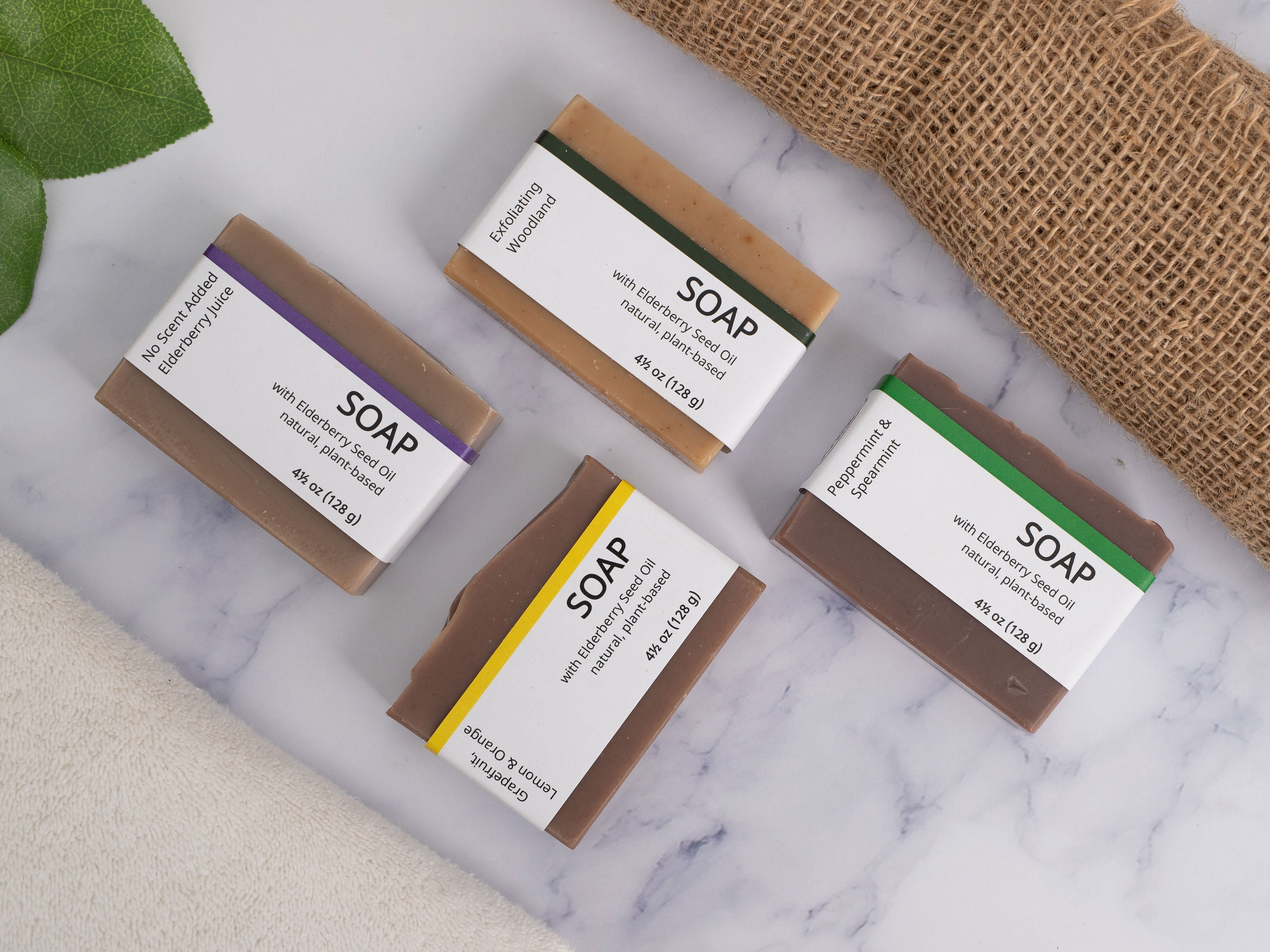I started looking at the back of soaps, shampoos, and cosmetics labels many years ago. I can't remember exactly why I started, but it ended here, at Fat Stone Farm.
I would be in the store looking at soap. Usually, there would be a picture of a nice plant on the front of the soap bar or lotion bottle. Words like "natural", "pure", "gentle" would grab my attention, followed with some wonderful ingredient mention like shea butter, aloe vera, goat's milk, or cocoa butter.
But ALAS, upon reading the ingredients!!! I put down bar after bar of soap. Where were the soaps and lotions that actually were PURE? What, exactly, are these ingredients doing in a "natural" "shea butter" "gentle" soap or lotion?
- Pentasodium Pentetate
- Propylparaben
- Guar Hydroxypropyltrimonium Chloride
- Cocomidopropyl betaine
And the list goes on....
But there wasn't much choice (or so I thought), and I continued using these soaps and lotions. I was at the point where I had to lather my entire body with store-bought body lotion after every shower with store-bought soap to avoid feeling "prickly" all over. After spending a day in a very highly heated room my lips would hurt like a mother and only 1/2 of a tube of store-bought lip balm would calm them down.
I heard a radio broadcast about hygiene practices and how they've changed over the century. In the early 1900s, the large soap manufacturers worked to increase per-capita consumption of shampoo by convincing women it was better to wash their hair twice a month. WAIT - twice a month? What was the general hair-washing routine PRIOR to this advertising? It was once per month.
And really, have our hair follicles and oil glands changed in 100 years? Not likely. Our modern hair-washing protocol is based on marketing and advertising, not human anatomy. So I tried spacing out my hair washing. When my hair was a bit longer, I could manage about 17 days between washings. My hair stylist said it was the best thing I could do to create healthy looking curls. And as a side benefit, I used 1/5 of the amount of shampoo. What else could I learn from previous generations regarding skin care and hygiene?
I tried the purest ingredients possible, thinking about what my ancestors may have done. I "washed" my face with olive oil. I used our farm-raised lard (from pigs) to moisturize my hands. I bought lots of sun hats and cut down on sunscreen. I made my own lip balm using our beeswax. I stopped using make up remover because the organic cooking oils removed eye makeup just fine.
LUCKILY for me, some other people were wondering all of this, too. Luckily - because lard is quite greasy and you can't do much for about 10 minutes while it soaks in, and even then you have to wipe it off with several paper towels. Because filling up tiny vials of lip balm is very tedious and they end up getting lost all over the place. And because you don't want to put just 'anything' around your eyes to get your mascara off (eye infections can happen, although it didn't happen to me).....
I found a 100% pure body lotion from a local soap maker. WOO HOO! So it doesn't last quite as long on the shelf as a highly-preserved bottle of lotion does, and the price is high comparatively, but the ingredients are so much better. After we converted over to her soaps, my skin stopped "prickling." I noticed that I was using much less body lotion, hardly any lip balm (even in winter), and my skin seemed to be on a healthy track.
If you read the backs of your food labels, I strongly urge you to start reading the backs of your skin care products labels. DO NOT use the graphics, colors, words, or images on the front of the labels to make informed choices, except that exceptionally fancy and highly packaged products are automatically suspicious because the contents may be low-quality. The cost is mostly in the packaging. And yes, our elderberry soaps contain sodium hydroxide, but that's lye. All soaps need lye or something with similar chemical properties to 'saponify' the oils/fats.
We say on our food labels to "eat food from the dirt, not the lab" and it's the same with our skin products. Join me on our healthy skin journey!

